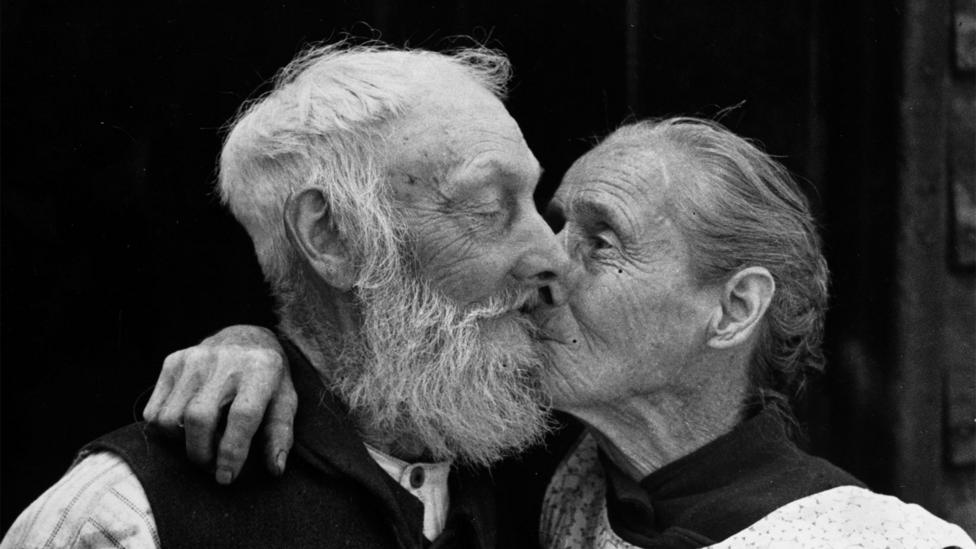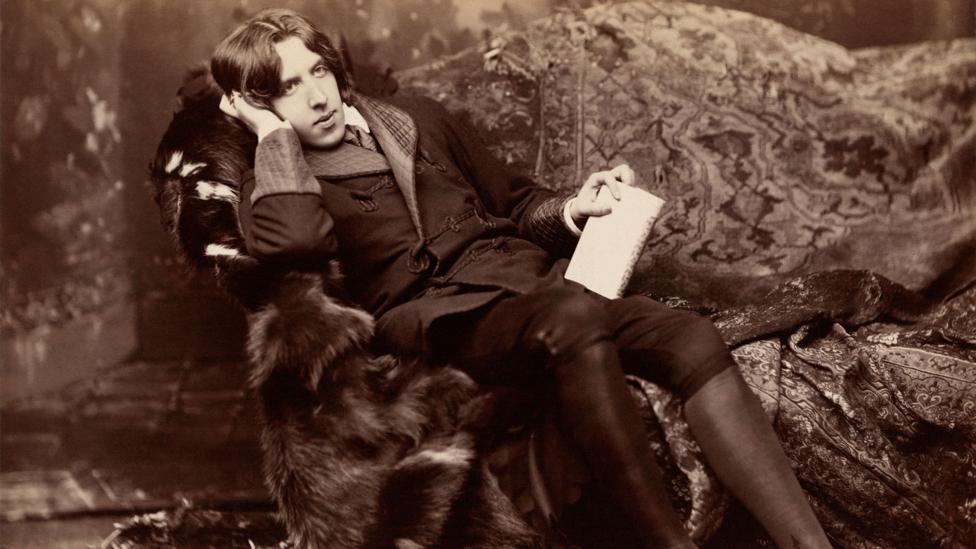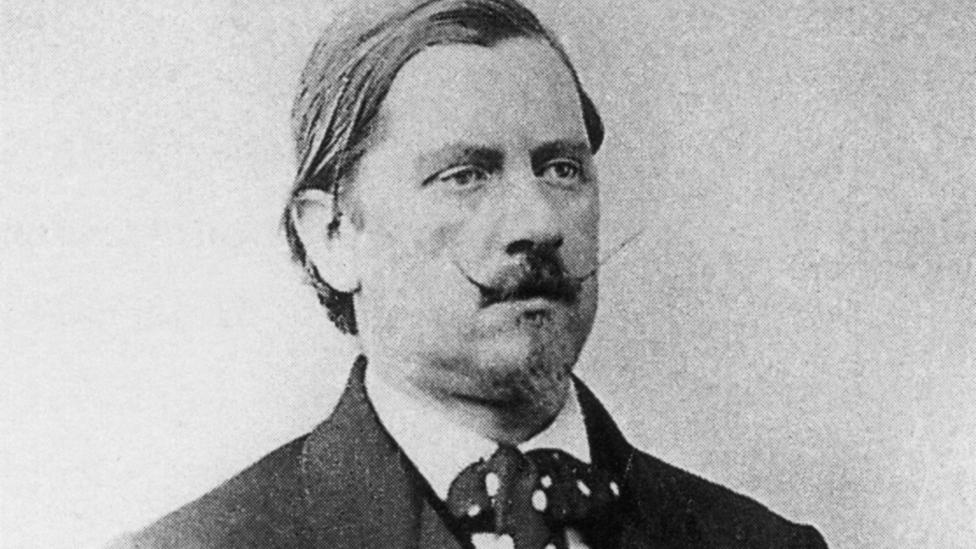2017, March 15: Brandon Ambrosino for the BBC, "Invention of 'Heterosexuality'"
One hundred years ago, people had a very different idea of what it means to be heterosexual. Understanding that shift in thinking can tell us a lot about fluid sexual identities today, argues Brandon Ambrosino.
By Brandon Ambrosino 15th March 2017
This story is featured in BBC Future’s “Best of 2017”
The 1901 Dorland’s Medical Dictionary defined heterosexuality as an “abnormal or perverted appetite toward the opposite sex.” More than two decades later, in 1923, Merriam Webster’s dictionary similarly defined it as “morbid sexual passion for one of the opposite sex.” It wasn’t until 1934 that heterosexuality was graced with the meaning we’re familiar with today: “manifestation of sexual passion for one of the opposite sex; normal sexuality.”
Whenever I tell this to people, they respond with dramatic incredulity. That can’t be right! Well, it certainly doesn’t feel right. It feels as if heterosexuality has always “just been there.”
A few years ago, there began circulating a “man on the street” video, in which the creator asked people if they thought homosexuals were born with their sexual orientations. Responses were varied, with most saying something like, “It’s a combination of nature and nurture.” The interviewer then asked a follow-up question, which was crucial to the experiment: “When did you choose to be straight?” Most were taken back, confessing, rather sheepishly, never to have thought about it. Feeling that their prejudices had been exposed, they ended up swiftly conceding the videographer’s obvious point: gay people were born gay just like straight people were born straight.
The video’s takeaway seemed to suggest that all of our sexualities are “just there”; that we don’t need an explanation for homosexuality just as we don’t need one for heterosexuality. It seems not to have occurred to those who made the video, or the millions who shared it, that we actually need an explanation for both.

There’s been a lot of good work, both scholarly and popular, on the social construction of homosexual desire and identity. As a result, few would bat an eye when there’s talk of “the rise of the homosexual” – indeed, most of us have learned that homosexual identity did come into existence at a specific point in human history. What we’re not taught, though, is that a similar phenomenon brought heterosexuality into its existence.
There are many reasons for this educational omission, including religious bias and other types of homophobia. But the biggest reason we don’t interrogate heterosexuality’s origins is probably because it seems so, well, natural. Normal. No need to question something that’s “just there.”
But heterosexuality has not always “just been there.” And there’s no reason to imagine it will always be.
When heterosexuality was abnormal
The first rebuttal to the claim that heterosexuality was invented usually involves an appeal to reproduction: it seems obvious that different-genital intercourse has existed for as long as humans have been around – indeed, we wouldn’t have survived this long without it. But this rebuttal assumes that heterosexuality is the same thing as reproductive intercourse. It isn’t.
“Sex has no history,” writes queer theorist David Halperin at the University of Michigan, because it’s “grounded in the functioning of the body.” Sexuality, on the other hand, precisely because it’s a “cultural production,” does have a history. In other words, while sex is something that appears hardwired into most species, the naming and categorising of those acts, and those who practise those acts, is a historical phenomenon, and can and should be studied as such.
Or put another way: there have always been sexual instincts throughout the animal world (sex). But at a specific point in time, humans attached meaning to these instincts (sexuality). When humans talk about heterosexuality, we’re talking about the second thing.
Hanne Blank offers a helpful way into this discussion in her book Straight: The Surprisingly Short History of Heterosexuality with an analogy from natural history. In 2007, the International Institute for Species Exploration listed the fish Electrolux addisoni as one of the year’s “top 10 new species.” But of course, the species didn’t suddenly spring into existence 10 years ago – that’s just when it was discovered and scientifically named. As Blank concludes: “Written documentation of a particular kind, by an authority figure of a particular kind, was what turned Electrolux from a thing that just was … into a thing that was known.”

Oscar Wilde's trial for 'gross indecency' is often considered a pivotal moment in the formation of the gay identity (Credit: Alamy)
Something remarkably similar happened with heterosexuals, who, at the end of the 19th Century, went from merely being there to being known. “Prior to 1868, there were no heterosexuals,” writes Blank. Neither were there homosexuals. It hadn’t yet occurred to humans that they might be “differentiated from one another by the kinds of love or sexual desire they experienced.” Sexual behaviours, of course, were identified and catalogued, and often times, forbidden. But the emphasis was always on the act, not the agent.
So what changed? Language.
In the late 1860s, Hungarian journalist Karl Maria Kertbeny coined four terms to describe sexual experiences: heterosexual, homosexual, and two now forgotten terms to describe masturbation and bestiality; namely, monosexual and heterogenit. Kertbeny used the term “heterosexual” a decade later when he was asked to write a book chapter arguing for the decriminalisation of homosexuality. The editor, Gustav Jager, decided not to publish it, but he ended up using Kertbeny’s novel term in a book he later published in 1880.
The next time the word was published was in 1889, when Austro-German psychiatrist Richard von Krafft-Ebing included the word in Psychopathia Sexualis, a catalogue of sexual disorders. But in almost 500 pages, the word “heterosexual” is used only 24 times, and isn’t even indexed. That’s because Krafft-Ebing is more interested in “contrary sexual instinct” (“perversions”) than “sexual instinct,” the latter being for him the “normal” sexual desire of humans.
“Normal” is a loaded word, of course, and it has been misused throughout history. Hierarchical ordering leading to slavery was at one time accepted as normal, as was a geocentric cosmology. It was only by questioning the foundations of the consensus view that “normal” phenomena were dethroned from their privileged positions.
The emphasis on procreation comes not primarily from Jewish or Christian Scriptures, but from Stoicism
For Krafft-Ebing, normal sexual desire was situated within a larger context of procreative utility, an idea that was in keeping with the dominant sexual theories of the West. In the Western world, long before sex acts were separated into the categories hetero/homo, there was a different ruling binary: procreative or non-procreative. The Bible, for instance, condemns homosexual intercourse for the same reason it condemns masturbation: because life-bearing seed is spilled in the act. While this ethic was largely taught, maintained, and enforced by the Catholic Church and later Christian offshoots, it’s important to note that the ethic comes not primarily from Jewish or Christian Scriptures, but from Stoicism.

Karl Maria Kertbeny created the label 'heterosexual" (Credit: Wikimedia Commons)
While Krafft-Ebing takes this procreative sexual ethic for granted, he does open it up in a major way. “In sexual love the real purpose of the instinct, the propagation of the species, does not enter into consciousness,” he writes.
In other words, sexual instinct contains something like a hard-wired reproductive aim – an aim that is present even if those engaged in 'normal' sex aren’t aware of it. Jonathan Ned Katz, in The Invention of Heterosexuality, notes the impact of Krafft-Ebing’s move. “Placing the reproductive aside in the unconscious, Krafft-Ebing created a small, obscure space in which a new pleasure norm began to grow.”
The importance of this shift – from reproductive instinct to erotic desire – can’t be overstated, as it’s crucial to modern notions of sexuality. When most people today think of heterosexuality, they might think of something like this: Billy understands from a very young age he is erotically attracted to girls. One day he focuses that erotic energy on Suzy, and he woos her. The pair fall in love, and give physical sexual expression to their erotic desire. And they live happily ever after.
For the rest of this essay see: https://www.bbc.com/future/article/20170315-the-invention-of-heterosexuality
